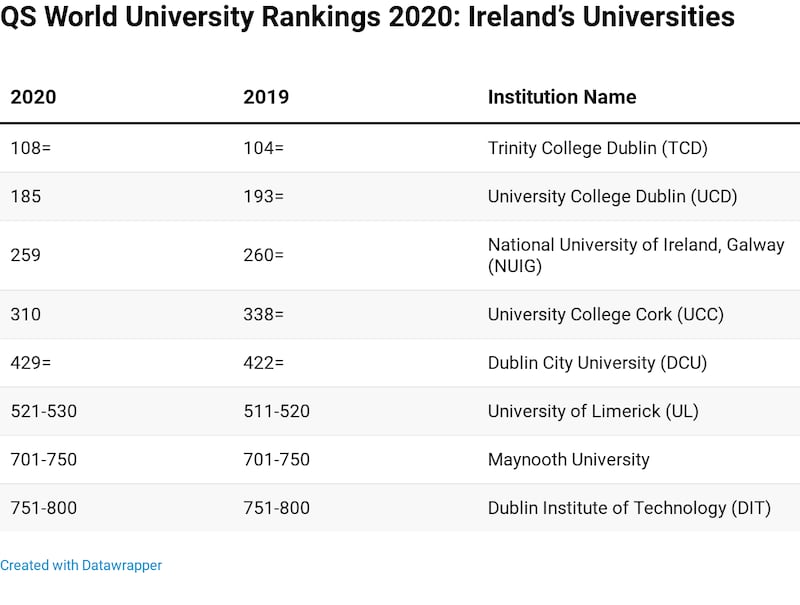The popularity of university rankings owes much to their simplicity. They claim to identify the best institutions around the world by comparing indicators – such as student-staff ratios, research citations and reputation – and combining them into an aggregated score. The problem is that this is a deeply flawed and reductive methodology. These indicators have little to do with the quality of teaching and learning . They do not measure the student experience or societal engagement. They are essentially a measure of research and reputation.
For all these shortcomings, there is no escaping the fact they are highly influential indicators which guide foreign investment and flows of international students. It is important to keep these facts in mind when asking whether rankings tell us anything meaningful for Ireland.

The latest QS World University Ranking indicates that Irish universities show little sign of reversing their decade-long decline. At best, they have stabilised, with three Irish universities improving, three declining, while two remained stable. Crowded classrooms have been one of the key factors in Irish universities losing ground on their rivals.
This, at least, is a measure which cannot be disputed. This issue was highlighted in an OECD report last year which found Ireland’s student-staff ratio was 21 students for each staff member. This was the third highest in the developed world and compares to an OECD average of 15.
This is the legacy of austerity-era policies which resulted in a decade of under-investment and caps on recruitment. Although student numbers have climbed significantly in Irish universities over the past 10 years, overall staff numbers have remained broadly the same. This is resulting in crowded classrooms and reduced access to tutorials.
It is now three years since the publication of the Cassells report which concluded that the higher education sector was facing a crisis following years of funding cuts and rising student numbers. With student numbers projected to grow by about 20 per cent over the decade, it recommended a new sustainable funding model. The Government says it has ramped up investment in the sector over recent years. However, it has used an increased levy on employers to cut its own core contribution to third level by about €15 million this year. It has also kicked the can down the road on a decision on a longer-term funding model for third level.
Rankings should not be the be-all and end-all. We must ensure our funding decisions are based on a broad range of evidence. But there is now plenty of this to show college classrooms are crowded, understaffed and putting the quality of teaching and learning under strain. We ignore this at our peril.









